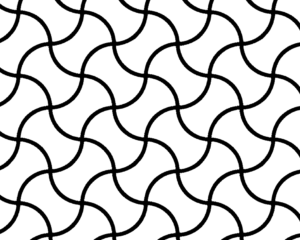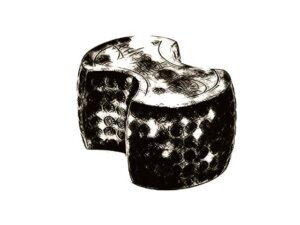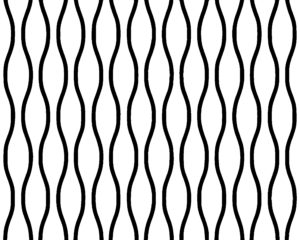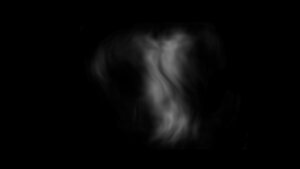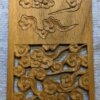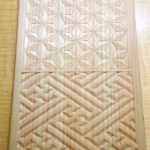How to carve patterns Part 8 ~Bundo-Tsunagi and Tatewaku~
This time, we're working on patterns made entirely of curved lines, carved using just one tool: a sharp chisel (Kiwa-tou).
These two designs—Bundo-Tsunagi and Tatewaku—are perfect for practicing delicate, flowing curves.
Tools Used
-
Sharp chisel (Kiwa-gatana)
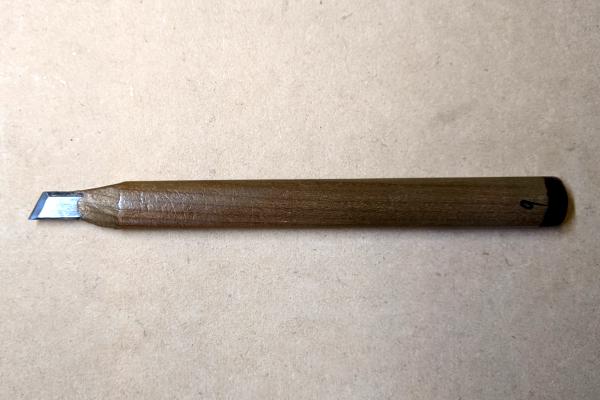
About the Patterns
Bundo-Tsunagi (分銅繋ぎ)
A Bundo is a traditional weight made of metal, once used with a balance scale.
Bundo-Tsunagi is a pattern formed by connecting these weights in a chain-like design.
Tatewaku is a classical Japanese motif representing rising steam or vapors, drawn with a pair of elegant vertical curves.
Though both patterns look simple, don’t be fooled — if you carve without care, your lines will feel loose or untidy. Stay focused, and approach this with precision.

Preparation
Use carbon paper to transfer Bundo-Tsunagi and Tatewaku onto a postcard-sized wooden board.
This time, only trace the cutting lines (we’ll explain which parts to carve below).
You can download the sketch here: [PDF of Bundo-Tunagi and Tatewaku].

1.How to carve Bundo-Tsunagi
Step 1: Make the Cut
Use the sharp chisel to make a cut along the red line, which is on the upper side of each black line.

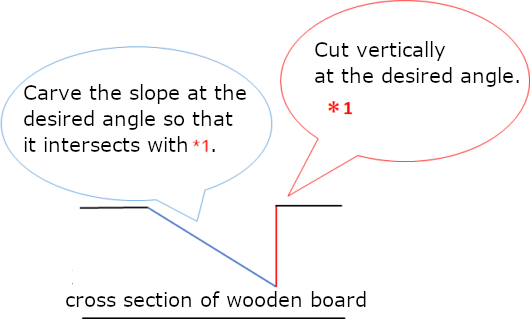
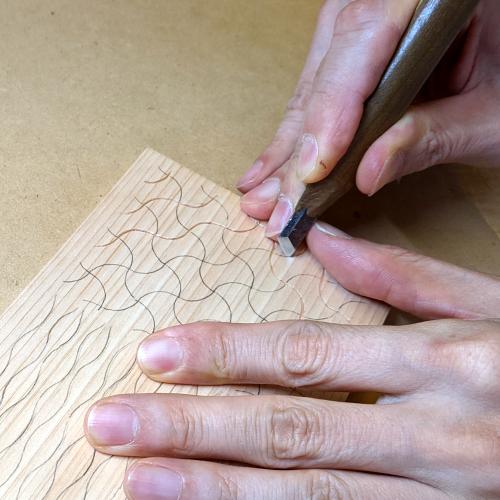
Step 2: Carve the Slope
Then, along the black line, carve a gentle slope so that it intersects the cut you made.
Use both the front edge and back edge of the chisel to match the curve and maintain clean lines.
With this, your Bundo-Tsunagi pattern will come to life with crisp, curved form.

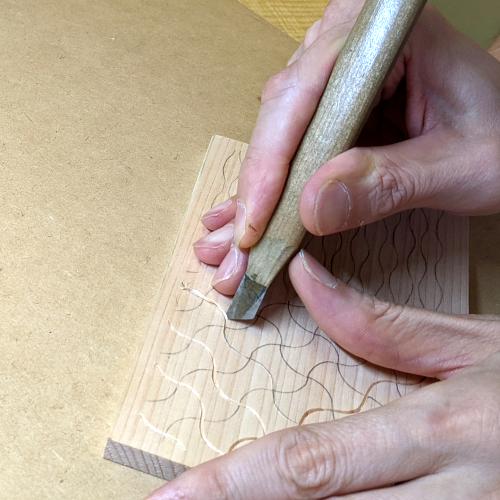
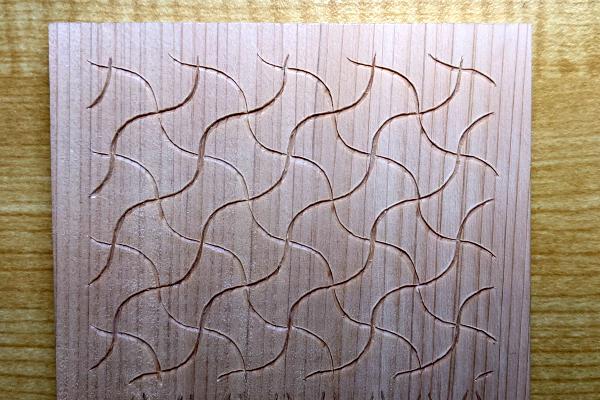
2.How to carve Tatewaku
Tatewaku is carved using the same technique as Bundo-Tsunagi:
-
First, make incisions along the red lines — these run alternately along the left and right sides of each black curve.
-
Then carve a sloped surface along the black lines, intersecting with your incision.
It may appear easier than Bundo-Tsunagi, but Tatewaku is surprisingly difficult.
The curves change direction frequently, requiring you to adjust your carving angle often. A steady hand and a calm mind are essential here.
Take your time and don’t rush the flow.
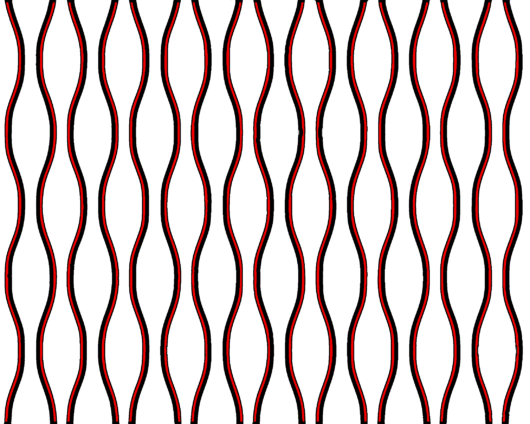
It may look easier than "Bundo-Tsunagi", but it is extremely difficult as you will not be able to carve cleanly unless you frequently change the direction in which you insert the chisel. Let's approach this with a calm mind.
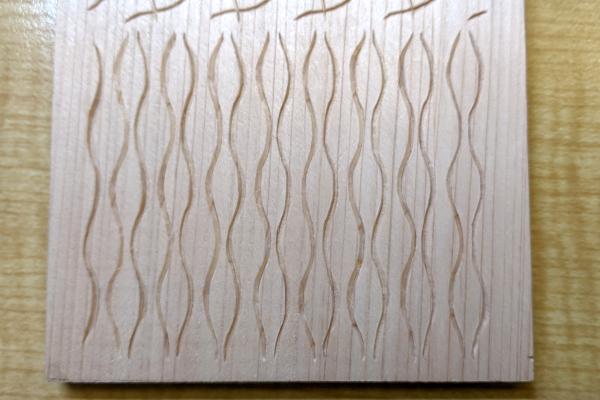
How to carve patterns
- From the lattice to the scales
- Raimon
- Asanoha and Sayagata
- Seigaiha and Sippo-Tsunagi
- Higaki and Kumikikko
- Mimasu-Tsunagi and Mimasu-Chirashi
- Ryusui
- Bundo-Tsunagi and Tatewaku ←Current page displayed
- Yamajimon and Misujidate
- Kemanmon and Gobosei
- Chidori and Chidori-Goshi
- Nejiume (Twisted plum)
- Kikubishi and Yaegiku
- Ichimatsu and Sankuzushi
- Kikko and Yagasuri
- Clouds
- Waves

